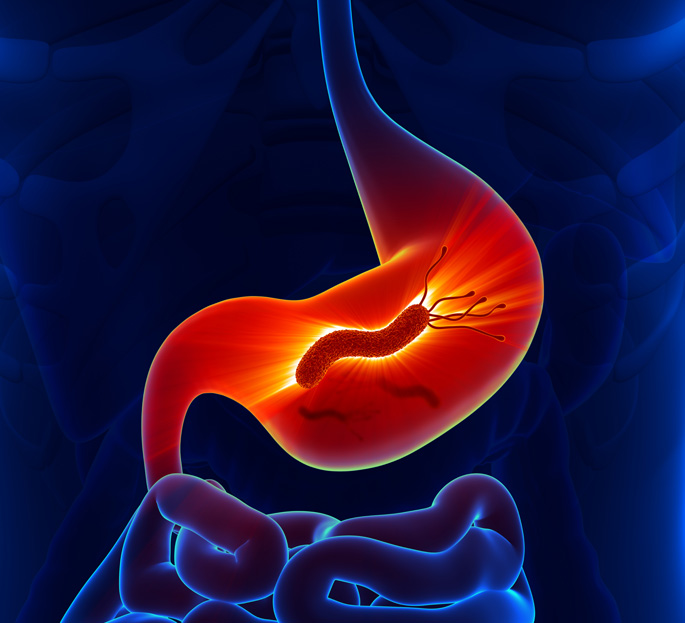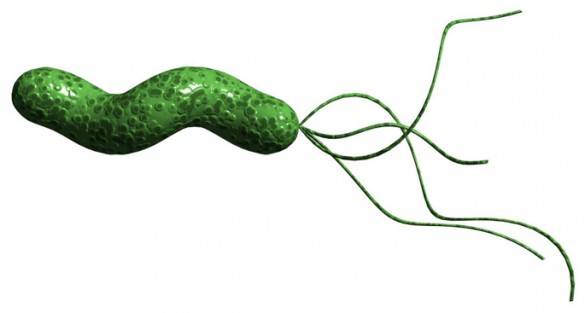by Leigh MacMillan
The bacterium Helicobacter pylori colonizes the stomach in half of the world’s population and increases the risk of gastric cancer.
Strains of H. pylori that contain a cluster of genes called the “cag PAI” are associated with higher risk. These strains synthesize a complex molecular machine known as a type IV secretion system (T4SS), which injects the oncoprotein CagA and other bacterial products into stomach cells.
Aung Soe Lin, Timothy Cover, MD, and colleagues have explored the roles of energy-generating ATPase proteins that are part of the T4SS.
They report in the February issue of Infection and Immunity that three ATPases (Cag-alpha, Cag-beta, and CagE) are each required for CagA translocation into host cells. In contrast, only two of the ATPases are required for the injection of other bacterial products that stimulate inflammatory signaling.
The findings provide new insights into the sources of energy used by this complex molecular machine linked to the pathogenesis of gastric cancer.
This research was supported by the National Institutes of Health (grants AI118932, CA116087, AI039657, AI112541) and the Department of Veterans Affairs.














